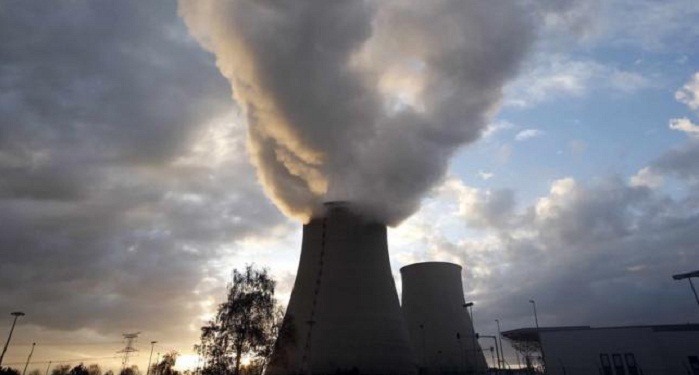While there is still support for national or regional markets, not least in China, which plans to launch the world`s biggest scheme in 2017, any hopes of creating a global carbon market at next week`s U.N. climate conference in Paris look wildly optimistic.
Major corporations, in particular, back the concept because its costs are more predictable than those of prospective future regulations.
In June, a group of European energy companies led by Royal Dutch Shell wrote to the United Nations to call for a global carbon price that would "discourage high carbon options and reduce uncertainty".
U.N. climate chief Christiana Figueres told them to do more and to spell out price levels, something they have yet to do.
Climate activists say the corporations` enthusiasm can be explained as a desire to dodge more aggressive measures, such as targets for renewable energy.
"The call for a carbon price is a shield with which to defend themselves from calls for faster change," says Tom Burke, chairman of the environmental campaign group E3G.
TEST CASE
Even with the jury out, nearly half of the more than 170 national pledges for reducing greenhouse gas emissions include some form of carbon pricing to meet their targets, officials say.
They range from the top emitter, China, to the tiny Pacific nation of Kiribati, imperilled by rising sea levels.
The best test case, for now, is the EU`s Emissions Trading Scheme, which raised 8.9 billion euros ($9.4 billion) in the three years to June 2015, according to European Commission figures.
Jos Delbeke, director general of the Commission`s climate action department and one of the chief architects of the ETS, says it has shown, crucially, that reducing carbon emissions is compatible with economic growth.
He says the EU`s gross domestic product has risen 46 percent since 1990, while greenhouse gas emissions have fallen by 23 percent, and that the ETS is still central to EU efforts to tackle climate change.
The scheme sets a cap on how much big emitters, chiefly power plants and factories, can pollute.
Mostly they have to buy the emissions credits at auction. Those who emit less than their cap can sell the surplus credits to companies that exceed their limits, which are progressively reduced over time.
So far, from the more than 11,000 industrial and energy plants covered by the EU ETS, emissions have fallen by almost 15 percent since 2008, Thomson Reuters Point Carbon figures show.
But critics say it is unclear how much of this was a direct result of the ETS, as opposed to Europe`s economic slowdown.
"LOOPHOLES AND VESTED INTERESTS"
They also say the revenues generated have merely boosted general government coffers rather than being spent on the environment, let alone on the poorer countries that pollute least but are set to suffer most from climate change.
"The carbon market promised the world lots of things it has failed to deliver. The ETS is riddled with loopholes and in thrall to vested interest," said Tim Gore, Oxfam`s international policy adviser on climate change.
Most critically, the activists say the polluters have been given an easy ride.
Point Carbon figures show that industry, which lobbied hard for help in dealing with extra energy costs, was given free carbon permits with a tradable value of 77 billion euros in the years to 2014.
Alongside this, the market price of EU ETS permits, and therefore the cost of pollution, has at times fallen to near zero as economic recession and miscalculations led to a surplus of credits.
The allocation system has now been reformed, but the total of free permits is still expected to hit 325 billion euros by 2030.
At the same time, in the absence of a global carbon pricing system, industry continues to complain that the cost of permits is driving it to leave Europe for cheaper regulatory environments.
ETS prices have risen back to 8.5 euros per tonne of CO2 produced, but are still far below peaks of above 30 euros, and too low to encourage investment in lower-carbon fuel. EU regulators are working on further reforms.
POORER COUNTRIES
There is a similar story of flawed execution behind another trading scheme, the United Nations` Clean Development Mechanism.
This was supposed to allow Western industries and governments to contribute to green projects in developing countries too small to support their own domestic or regional trading schemes, "offsetting" rather than cutting their own emissions.
The United Nations says the scheme has provided more than $315 billion for environmental projects.
However, the value of these certificates also fell from a high of more than 23 euros per tonne of CO2 avoided to near zero in 2014 as the scheme`s credibility was called into doubt and the value of the EU`s permits crashed.
Environment campaigners say the funds were concentrated in a handful of industrial gas projects rather than filtering down to the poorest nations, known as the Least Developed Countries (LDCs), who found the scheme hard to access.
"By the time the LDCs were ready to take advantage ... the prices had collapsed," Giza Gaspar Martins, Angola’s climate negotiator for the U.N. talks, told Reuters.
U.N. carbon credit prices still languish around 0.60 euros a tonne, but Martins still backs the scheme in the hope that rich nations can push up prices to a level where they can provide significant funds to help the poorest nations adapt to climate change.
As for a true global carbon market - a draft of the agreement to be finalised in Paris, intended as the first ever pact to unite rich and developing nations against climate change, contains only a small, oblique reference to "internationally transferred mitigation outcomes".
More about:
















































